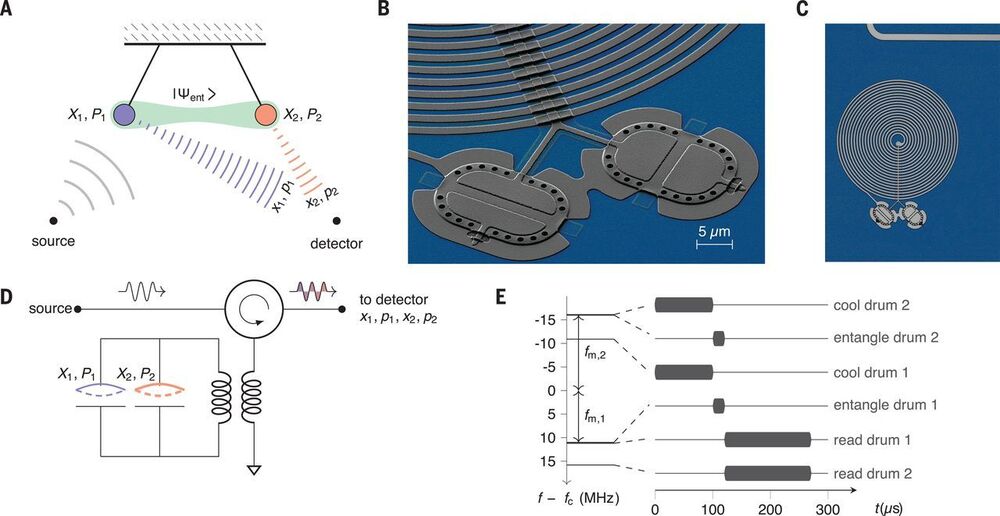Quantum entanglement occurs when two separate entities become strongly linked in a way that cannot be explained by classical physics; it is a powerful resource in quantum communication protocols and advanced technologies that aim to exploit the enhanced capabilities of quantum systems. To date, entanglement has generally been limited to microscopic quantum units such as pairs or multiples of single ions, atoms, photons, and so on. Kotler et al. and Mercier de Lépinay et al. demonstrate the ability to extend quantum entanglement to massive macroscopic systems (see the Perspective by Lau and Clerk). Entanglement of two mechanical oscillators on such a large length and mass scale is expected to find widespread use in both applications and fundamental physics to probe the boundary between the classical and quantum worlds.
Science, this issue p. 622, p. 625; see also p. 570
Quantum entanglement of mechanical systems emerges when distinct objects move with such a high degree of correlation that they can no longer be described separately. Although quantum mechanics presumably applies to objects of all sizes, directly observing entanglement becomes challenging as masses increase, requiring measurement and control with a vanishingly small error. Here, using pulsed electromechanics, we deterministically entangle two mechanical drumheads with masses of 70 picograms. Through nearly quantum-limited measurements of the position and momentum quadratures of both drums, we perform quantum state tomography and thereby directly observe entanglement. Such entangled macroscopic systems are poised to serve in fundamental tests of quantum mechanics, enable sensing beyond the standard quantum limit, and function as long-lived nodes of future quantum networks.
